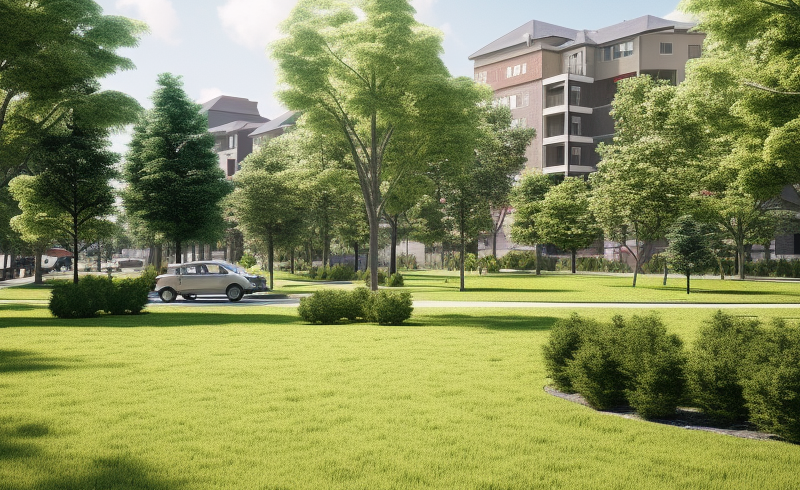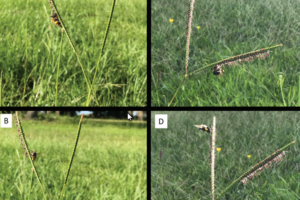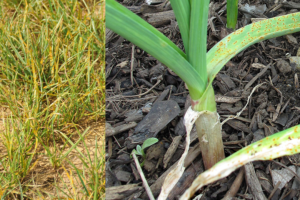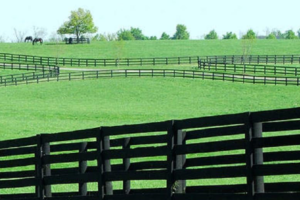
Introduction
The Urban Lawn: A Common Sight
When you think of a city, what comes to mind? Skyscrapers, traffic, and bustling streets, perhaps. But the urban lawn is another element that’s just as common yet often overlooked. These patches of green are everywhere, from our parks to our backyards and even in the spaces between buildings. They’re a universal part of our urban landscapes, providing a touch of nature amidst the concrete and steel.
However, these lawns are more than just pretty to look at. They’re complex ecosystems that play a significant role in our urban environments. They provide a habitat for various species, help regulate our climate, and even contribute to our well-being. But despite their importance, they’re often taken for granted, with many people unaware of the intricate dynamics beneath their feet.
The Need for Research: Understanding Our Lawns
Given their prevalence and importance, you’d think we’d know everything there is to know about lawns. Surprisingly, that’s not the case. Lawns are a complex ecological and social phenomenon that we’re only beginning to understand. They’re influenced by many factors, from the local climate and soil conditions to cultural practices and aesthetic preferences.
Moreover, our traditional ways of maintaining lawns are coming under scrutiny. With the increasing pressures of climate change and urbanization, it’s becoming clear that we need to find more sustainable ways of managing our urban green spaces. This is where research comes in. By studying lawns, we can gain insights into their benefits and drawbacks, understand their role in our cities, and explore new ways of enhancing their positive impacts while mitigating the negatives. In other words, we need to start seeing our lawns not just as static patches of green but as dynamic living systems that can be nurtured and optimized for the benefit of all.
The Ubiquity of Lawns
Lawns: The Green Blanket of Our Cities
Imagine taking a bird’s eye view of any city in the world. What do you see? Buildings, roads, and amidst all that, a sea of green. That’s right, lawns. These patches of grass are a universal feature of our urban landscapes, covering a significant portion of our cities’ green spaces. In some cities, they make up to 70% of all green areas. That’s a lot of grass!
Lawns are everywhere, from Germany to Sweden, the United States to China, and Australia. They’re in our parks, backyards, and even spaces between buildings. No matter where you go, you will likely find a lawn nearby. They’re like the green carpet that unifies our diverse urban landscapes, providing a touch of nature amidst the hustle and bustle of city life.
Lawns: More Than Just Grass
But why are lawns so common? Well, there are a few reasons. For one, they’re a simple, cost-effective way to cover open spaces. After a building is demolished or a new park is built, planting a lawn is often the quickest and easiest way to make the place look neat and attractive.
Moreover, lawns are incredibly versatile. They can be a place to relax, play sports, or even hold events. They’re like the Swiss army knife of landscape design – they can do everything. And let’s remember their aesthetic appeal. There’s something about a well-maintained lawn that’s pleasing to the eye.
However, this ubiquity of lawns has a downside. It leads to a certain sameness in our urban environments, a phenomenon known as biological and visual homogenization. In other words, our cities start to look the same, losing their unique character and identity. This is one of the challenges we must address as we rethink our approach to urban lawns.
The Challenges of Maintaining Lawns
When Green Turns Brown
Maintaining a lush, green lawn is more challenging than it seems. Have you ever noticed how a lawn turns brown during a heatwave or a drought? That’s because grass, like all living things, needs water to survive. When there’s not enough water, the grass struggles to stay alive, and eventually, it dries up and dies, turning the once-green lawn into a brown, lifeless patch.
This is becoming an increasingly common sight in many parts of the world. From Europe to the United States, South Africa to Australia, heatwaves and droughts are becoming more frequent and intense due to climate change. These extreme weather events put a lot of stress on our lawns, leading to the widespread degradation of our urban green spaces. And when our lawns suffer, so do we, as we lose the many benefits they provide.
The Plastic Problem: Synthetic Lawns and Microplastic Pollution
Faced with the challenge of maintaining a green lawn amidst water shortages, some people turn to synthetic lawns. These are essentially plastic carpets that look like grass. They stay green all year round, require no water, and withstand all sorts of weather. That sounds like the perfect solution, right?
Well, not quite. Synthetic lawns come with their own set of problems. For one, they contribute to microplastic pollution. Every year, many tiny plastic particles from synthetic lawns end up in our soil, rivers, and oceans. These microplastics can harm wildlife and even enter our food chain.
Moreover, synthetic lawns don’t provide the same benefits as natural grass. They don’t produce oxygen, they don’t absorb carbon dioxide, and they don’t provide a habitat for wildlife. In other words, they look like grass but don’t act like grass.
These challenges highlight the need for more sustainable alternatives to our traditional lawns. We need to find ways to maintain our urban green spaces that are environmentally friendly and resilient to the changing climate.
The Need for Sustainable Alternatives
Weighing the Pros and Cons: Ecosystem Services and Disservices of Lawns
When discussing lawns, it’s essential to understand that they’re not all bad or all good. Like most things in life, they have their pros and cons. In scientific terms, these are known as ecosystem services and disservices.
On the plus side, lawns provide several benefits. They produce oxygen, absorb carbon dioxide, and help regulate our climate. They also provide a habitat for various species and contribute to our well-being by providing spaces for recreation and relaxation. These are the ecosystem services of lawns.
On the downside, lawns also have their drawbacks. They require a lot of water and energy to maintain, which can be a problem in areas with water shortages. They also contribute to homogenizing our urban environments, leading to biodiversity loss. And let’s remember the issue of microplastic pollution from synthetic lawns. These are the ecosystem disservices of lawns.
Looking to Nature for Solutions: The Concept of Nature-Based Solutions
Given these challenges, it’s clear that we need to find more sustainable alternatives to our traditional lawns. But where do we start? One promising approach is to look to nature for solutions. This is the concept of nature-based solutions.
In simple terms, nature-based solutions involve using natural processes to address societal challenges. For example, instead of using synthetic lawns, we could use native plants that are adapted to local conditions and require less water and maintenance. These plants could provide the same benefits as grass, such as providing a habitat for wildlife and a space for recreation while avoiding the drawbacks.
The key to nature-based solutions is to work with nature, not against it. By understanding and respecting the local environment, we can create urban green spaces that are not only sustainable but also beautiful and enjoyable. This is the future of urban lawns that we should strive for.
Exploring Nature-Based Solutions
Two Natures: Different Approaches to Urban Nature
Regarding nature in our cities, there are two main ways of looking at it. The first is the traditional view, where nature is seen as separate from the city. In this view, lawns are often seen as a way to bring a bit of nature into the city, providing a green oasis amidst the concrete jungle.
The second view is a more integrated approach, where nature is considered an integral part of the city. In this view, urban nature isn’t just about having patches of green here and there. It’s about creating a city that works in harmony with nature, where natural processes are incorporated into the city’s design and operation.
These two views of nature can influence how we approach lawns. If we take the traditional view, we might focus on maintaining the green appearance of lawns, even if it means using a lot of water or resorting to synthetic lawns. But if we take the integrated view, we might look for ways to make our lawns more sustainable and resilient, such as using native plants or designing lawns that can withstand droughts.
Adapting to Local Conditions: The Importance of Local Solutions
One of the critical principles of nature-based solutions is the importance of local solutions. This means that instead of applying the same solution everywhere, we should look for solutions adapted to the local conditions.
For example, the plants that can thrive on a lawn in Sweden might not do well in Australia. The climate, soil conditions, and even the local culture can all influence what works and what doesn’t. By understanding these local conditions, we can design sustainable lawns that fit in with the local environment and meet the needs and preferences of the local community.
This approach also opens up the possibility for a greater diversity of lawns. Instead of having the same type of lawn everywhere, we could have a variety of lawns, each with its unique mix of plants and design. This could make our cities more exciting and vibrant while promoting biodiversity.
In conclusion, exploring nature-based solutions for lawns is more than just about finding alternatives to grass. It’s about rethinking our relationship with nature and finding ways to create urban green spaces that are sustainable, resilient, and enjoyable. It’s a challenging task, but with creativity and a willingness to learn from nature, it’s a task that we can accomplish.
Frequently Asked Questions
What are urban lawns?
Urban lawns are the most common part of open green spaces and urban green infrastructures. They are prevalent in Europe and the United States of America, but their importance is often underestimated in other parts of the world.
What are the benefits of urban lawns?
Urban lawns provide various ecosystem services. They contribute to the aesthetic appeal of cities, provide spaces for recreation, and can contribute to biodiversity.
What are the problems with urban lawns?
Urban lawns can contribute to the homogenization of urban environments. They can degrade quickly due to trampling and extreme weather conditions, turning into brownscapes and losing their ecosystem services. The use of synthetic lawns as an alternative contributes to environmental pollution.
What are the alternatives to urban lawns?
Alternatives to urban lawns can be found in nature-based solutions, which are resilient and sustainable alternatives for urban green spaces. These solutions can be found in urban ecosystems and various local native plant communities that are rich in species and able to withstand harsh conditions.
What is the future of urban lawns?
The future of urban lawns involves investigating, analyzing, and understanding them from different environmental, socio-cultural, and design perspectives. The aim is to explore, suggest, and test different locally adapted nature-based solutions.
What is the impact of urban lawns on biodiversity?
Urban lawns can both contribute to and detract from biodiversity. While they can provide habitats for various species, they can also contribute to the homogenization of urban environments, which can negatively impact biodiversity.
How can we improve the sustainability of urban lawns?
Improving the sustainability of urban lawns involves exploring nature-based solutions, which are resilient and sustainable alternatives for urban green spaces. This involves careful study of existing lawns, their structure, composition, soil quality, and hydrological capacity, as well as their establishment and management regime.
What are some nature-based solutions for urban lawns?
Nature-based solutions for urban lawns involve using local native plant communities that are rich in species and able to withstand harsh conditions. These solutions should be locally adapted, socially acceptable, and offer improved overall resilience to climate change and its effects on urban green infrastructure.
Conclusion
The Green Revolution: The Benefits of Nature-Based Solutions
As we’ve seen, the humble lawn is more than just a patch of green. It’s a complex ecosystem that plays a vital role in our cities. But with the challenges of climate change and urbanization, it’s clear that we need to rethink our approach to lawns. This is where nature-based solutions come in.
By working with nature, we can create lawns that are sustainable, resilient, beautiful, and enjoyable. We can create lawns that provide a habitat for wildlife, help regulate our climate, and provide spaces for recreation and relaxation, all while using less water and energy. This is the green revolution that we need to strive for.
But the benefits of nature-based solutions go beyond just lawns. They can also contribute to a more sustainable and resilient city. They can help us adapt to climate change, promote biodiversity, and improve our well-being. In other words, they can help us create cities that are not only livable but also lovable.
The Future of Lawns: The Role of Innovative Landscape Architecture Practices
The journey towards sustainable lawns will be challenging. It will require creativity, innovation, and a willingness to challenge the status quo. It will require us to look beyond the traditional lawn and explore new ideas and possibilities. This is where innovative landscape architecture practices can play a crucial role.
By applying the principles of nature-based solutions, landscape architects can design lawns adapted to local conditions, provide various ecosystem services, and fit in with the local culture and aesthetics. They can also engage with the local community, involving them in designing and maintaining the lawns and educating them about the importance of sustainable lawns.
In conclusion, the future of lawns is about more than finding alternatives to grass. It’s about rethinking our relationship with nature and finding ways to create urban green spaces that are sustainable, resilient, and enjoyable. It’s a challenging task, but with creativity, innovation, and a willingness to learn from nature, it’s a task that we can accomplish. So let’s roll up our sleeves and get to work. The future of our lawns, and our cities, depends on it.

Bob Green, a passionate lawn care enthusiast with over two decades of landscaping experience, is this website’s proud owner. His vast knowledge of horticulture and dedication to helping homeowners maintain beautiful lawns are reflected in the valuable content he shares on his platform. John has always been interested in Agrostology.














